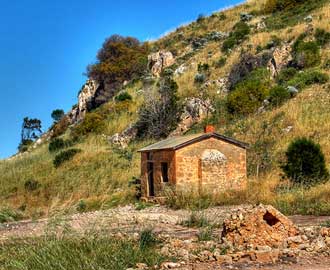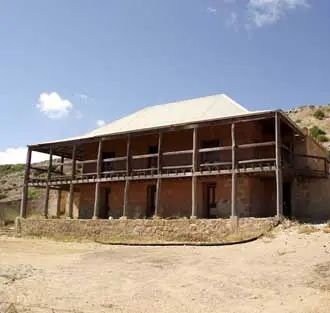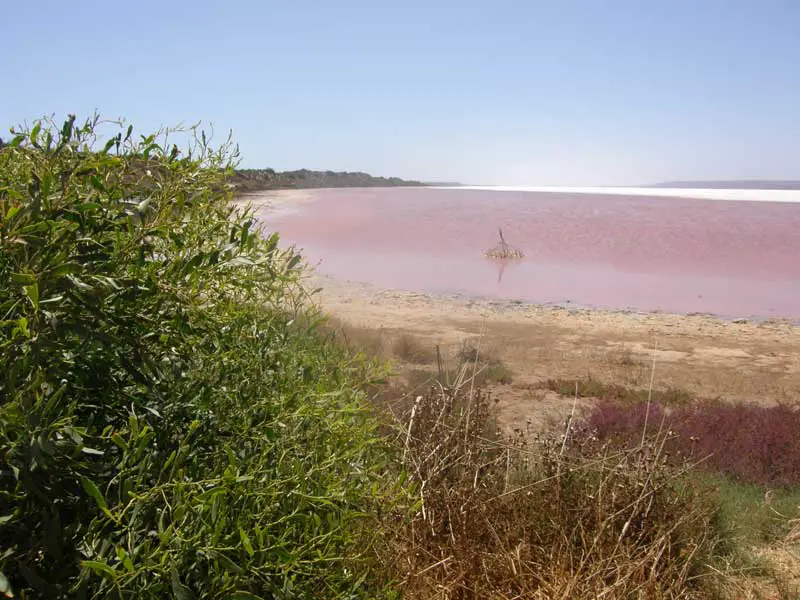Originally the port for the Murchison region and called Port Gregory, the township of Gregory is today a small tourist and fishing village.
Gregory is a fascinating settlement where convict history, fishing, wheat lands and 'getting away from it all' holidaying are an enthralling mix. There can be few places in Australia where wheat fields grow right next to huge white sand dunes, where an historic convict settlement stands on the shores of a pink lake, and where a reef runs parallel to the coast forming a natural breakwater for a small harbour.

Lynton Convict Depot ruins
Lynton Convict Depot ruins (1853-56): remnants of a failed experiment to hire convicts to local pastoralists. The first 60 ticket of leave men arrived at Port Gregory harbour in 1853, but within 4 years the depot had closed down, its occupants ravaged by scurvy. All that remains is the Superintendent of Convicts House (1853) and ruins of other the depot's buildings in the surrounding bush. The depot ruins are on the road to Gregory.

Sandford's House
Sanford's House (it can be seen across Hutt Lagoon and can be inspected by taking the signposted road to the east of the lagoon) was built by the convicts in 1853 out of limestone. A verandah was subsequently added with masts salvaged from the wreck of the Mary Queen of Scots which ran aground at Archdeacon Ledge in March 1855.
Sanford, the grandson of the Duke of Bedford, was appointed Superintendant of Convicts in late 1852 but resigned in 1854 (the house and outbuildings including a stone mill and large stone barn were all conveniently built during his period as Superintendant) to concentrate on whaling and agriculture.

Hutt Lagoon
The major natural attraction in the area is Hutt Lagoon, a remarkable pink lagoon which is coloured by the presence of algae known as beta caratine in the waters. It is mined both for its salt and for its food colouring properties.
Where is it?
47 km west of Northampton.
History of Gregory
the existence of Hutt River and Hutt Lagoon was recorded by George Grey who passed through the area in 1839. In 1848 explorer Augustus C. Gregory discovered lead ore in the Murchison River. In 1853, FT Gregory and Captain J. Johnson arrived in the area with his ticket of leave convicts.
There is some kind of appropriate irony in the fact that Johnson's brig Leander ran aground and had to be abandoned. Port Gregory may be a pretty port but it is not a safe one. Between 1853-1867 six vessels were wrecked on the reef.
The Lynton Convict Depot lasted less than four years before it was closed down. The convicts were either shipped back to Fremantle or settled in nearby Greenough. Today Port Gregory is nothing more than a fishing village and a place for people who really want to get away from it all.
The name recalls explorer Augustus C. Gregory, who discovered lead ore on the Murchison River in 1848.
Design by W3Layouts | Content © 2013 Phoenix Group Co. | Sales: phone 1300 753 517, email: [email protected]

